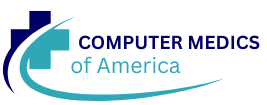Imagine a world where your fridge knows when you’re out of milk and your thermostat adjusts itself based on your favorite cozy movie nights. Welcome to the realm of Internet of Things (IoT) devices, where everyday objects are getting smarter and more connected. It’s not just sci-fi anymore; it’s reality, and it’s revolutionizing how people live, work, and play.
Table of Contents
ToggleOverview of Internet of Things (IoT) Devices
IoT devices are physical objects embedded with sensors, software, and other technologies that facilitate connectivity. Common examples include smart home devices like thermostats, security cameras, and refrigerators. These gadgets communicate through the internet, allowing users to access and control them remotely.
This technology streamlines tasks and enhances efficiency across various sectors. In healthcare, IoT devices monitor patients’ vital signs in real-time, improving care standards. Meanwhile, in agriculture, connected sensors help farmers optimize water usage and crop yields.
Data collection constitutes a critical element of IoT devices. Sensors gather information continuously, enabling data analysis for better decision-making. This capability helps businesses adjust operations based on insights from consumer behavior patterns.
Security remains a vital concern in the IoT landscape. Protecting sensitive data requires robust encryption methods and regular software updates. Manufacturers strive to develop secure devices, yet vulnerabilities persist, necessitating ongoing vigilance from users.
The market for IoT devices continues to experience significant growth. According to recent forecasts, the global IoT market is expected to reach $1.1 trillion by 2026. This growth presents opportunities and challenges as industries adopt these technologies to stay competitive.
Interoperability between devices promotes a seamless user experience. Many manufacturers now prioritize compatibility, enabling different devices to work together. Enhanced communication between devices leads to greater functionality, making them more appealing to consumers.
Overall, IoT devices are reshaping how individuals interact with their environments. Their increasing prevalence signals that technology integration in daily life is not a transient trend but a fundamental shift in modern living.
Types of IoT Devices
IoT devices span various categories, allowing seamless interaction and control across different environments.
Consumer IoT Devices
Consumer IoT devices enhance daily living through connectivity. Smart thermostats regulate home temperature while learning user preferences. Security cameras provide real-time video feeds, improving home safety. Wearable fitness trackers monitor health metrics, offering insights into physical activity. Smart appliances, like refrigerators and ovens, streamline cooking and food management. These devices connect effortlessly, creating a smart home ecosystem that increases convenience and efficiency.
Industrial IoT Devices
Industrial IoT devices optimize processes in manufacturing and supply chains. Sensors on machinery monitor performance, predicting maintenance needs and minimizing downtime. Asset tracking devices enhance inventory management, increasing operational efficiency. Environmental sensors collect data on temperature, humidity, and air quality, ensuring compliance with safety standards. These technologies drive productivity by providing real-time insights and enabling proactive decision-making in industrial settings.
Healthcare IoT Devices
Healthcare IoT devices revolutionize patient care and monitoring. Wearable health monitors track vital signs and activity levels, empowering patients to manage their well-being. Smart medical devices deliver real-time data to healthcare providers, facilitating timely interventions. Remote patient monitoring systems improve access to care, especially for those in underserved areas. These innovations promote better health outcomes by enabling personalized treatment plans and enhancing communication between patients and providers.
Key Technologies Behind IoT Devices
Key technologies underpinning IoT devices enable seamless interaction and monitoring. These technologies include sensors, actuators, and connectivity protocols, which collectively drive the functionality and efficiency of IoT systems.
Sensors and Actuators
Sensors play a crucial role in gathering data by detecting environmental changes. Temperature sensors, motion detectors, and humidity sensors are common examples. Actuators serve as the response mechanism, influencing devices based on sensor input. These components work together, enabling automation and improving user experience. For instance, a temperature sensor may detect a sudden drop in heat, prompting an actuator to adjust the thermostat accordingly.
Connectivity Protocols
Connectivity protocols facilitate communication between IoT devices and the internet. Wi-Fi, Zigbee, and LoRaWAN are widely used options. These protocols ensure data transmission is efficient, allowing devices to send and receive information in real-time. Each protocol serves different use cases, with Wi-Fi supporting high data rates and Zigbee focusing on energy efficiency. Understanding these protocols helps stakeholders select the right technology for specific applications, enhancing interoperability across various IoT ecosystems.
Benefits of IoT Devices
IoT devices offer numerous benefits that enhance daily life and streamline operations across various sectors.
Enhanced Efficiency
Efficiency sees significant improvement through IoT devices. Smart thermostats optimize energy consumption, automatically adjusting settings based on user habits. In industrial settings, IoT devices monitor equipment performance in real time, reducing downtime and maintenance costs. Furthermore, smart inventory management systems facilitate automated stock replenishment, minimizing human oversight. Organizations leverage these devices to optimize workflows and increase productivity levels. Unlike traditional systems, these interconnected devices provide immediate insights, allowing quick adjustments to improve overall operations.
Improved Data Collection
Data collection benefits remarkably from IoT devices. Sensors embedded within these devices gather real-time information regarding user interactions and environmental conditions. Healthcare systems utilize IoT devices to continuously monitor patient vitals, delivering timely updates to healthcare providers. In retail, consumer behavior data helps businesses tailor marketing strategies for better engagement. Collecting vast amounts of data allows for more informed decision-making, enhancing customer satisfaction. Stakeholders can analyze patterns and trends, leading to optimized processes that drive growth and innovation.
Challenges and Concerns
IoT devices present various challenges and concerns that stakeholders must address to ensure safe and effective deployment.
Security Issues
Security issues pose significant risks for IoT systems. Unauthorized access to devices may lead to data breaches, compromising sensitive information. Vulnerability management becomes essential as devices are often deployed without sufficient security measures. Regular software updates play a crucial role in mitigating risks; without them, users expose themselves to potential cyberattacks. Encryption protocols safeguard transmitted data, minimizing interception during communication. The diverse landscape of IoT devices increases the attack surface, complicating security strategies. Stakeholders should prioritize developing robust security frameworks tailored to each device’s unique characteristics.
Privacy Considerations
Privacy considerations arise as IoT devices continuously collect user data. Sensitive information gathered from devices can include personal habits, health metrics, and location data. Proper data management practices help protect user privacy while complying with regulations like GDPR. Transparency in data usage fosters trust between manufacturers and consumers; users benefit from knowing how their data is utilized. Allowing users control over their data enhances privacy and enables informed decisions about device use. Manufacturers must prioritize privacy by implementing clear policies and procedures that address user concerns effectively.
Future Trends in IoT Devices
Growth in IoT devices is accelerating, indicating a notable shift towards smart environments. Predictions suggest that the market may exceed $1.1 trillion by 2026, reflecting rising consumer and industrial adoption. Enhanced artificial intelligence (AI) integration with IoT devices leads to improved automation and data analysis capabilities.
Emphasis on 5G technology is becoming paramount, allowing for faster data transmission and greater device connectivity. This advancement enables real-time processing, reducing latency significantly. Moreover, developments in edge computing are enhancing data handling by processing information closer to the source.
Security concerns require immediate attention in the expanding IoT landscape. Stronger encryption methods and advanced authentication protocols must be a priority to protect against data breaches. Adopting a zero-trust security model enhances confidence in IoT infrastructures.
Interoperability remains essential as manufacturers strive for compatibility between devices. Striking collaborations among industry players can bolster unified standards, simplifying user experiences. Increased focus on energy efficiency highlights sustainability in IoT device usage, promoting eco-friendly practices.
Customization options for consumer IoT devices are rising, allowing users to tailor functionalities to their preferences. User-friendly interfaces and seamless integration into daily routines will likely improve adoption rates. As smart cities continue to develop, the role of IoT devices in urban infrastructure will deepen, addressing traffic management and resource allocation more effectively.
Healthcare applications are expanding rapidly as well. Remote monitoring solutions will aid in patient care management, emphasizing proactive health interventions. Continuous advancements in sensor technology enhance the capability of devices to gather vital health data accurately.
Overall, transformative trends in IoT devices promise to reshape various aspects of life and industry, marking a future where connectivity drives innovation.
The rise of IoT devices marks a significant evolution in how people engage with their surroundings. As these devices become more integrated into daily life they enhance efficiency and convenience while also presenting new challenges. Security and privacy concerns remain at the forefront of discussions surrounding IoT technology.
Looking ahead the potential for innovation in this space is immense. With advancements in AI and 5G technology IoT devices will continue to evolve and reshape industries. As manufacturers prioritize interoperability and user privacy the future promises a more connected and intelligent world. Embracing these changes will be crucial for individuals and businesses alike to thrive in this new landscape.



